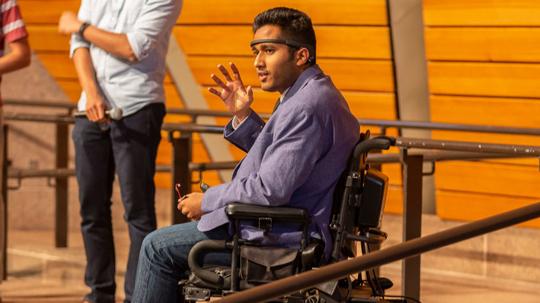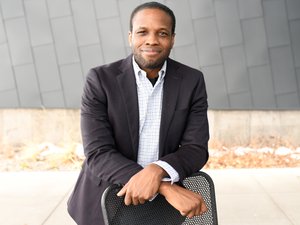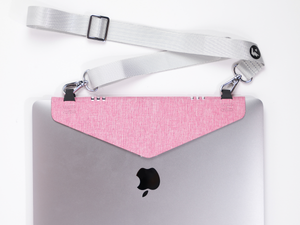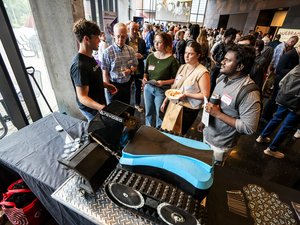
Stephen Mylabathula, a computer engineering student, returned to campus at the University Minnesota two years ago after competing in an MIT International Hackathon, feeling happy with his finish – something he saw as a great new line to add to his resume. His team made it into the top 10 out of something like 250 teams with an idea to make it easier for people in wheelchairs to direct their movements with a gesture instead of a joystick.
The potential impact of this impressive tech hit him when he ran into a friend at school who uses a wheelchair.
“He was super excited about it,” Mylabathula said. “When he told that to me, I thought, maybe there’s something here. Maybe if we build out this technology further, maybe it would help one person.”
Mylabathula and three other University of Minnesota students co-founded Galilea with the goal to take what he’d conceptualized at Hackathon and make a product that’s safe for and useable by people with varying mobility, while allowing them to develop new technology they’re passionate about.
“This is cutting edge stuff,” Mylabathula said. “We really thrive in that sort of environment. It’s something that really satisfies us.”
Galilea is a headband holding two sensors that detect head movement and brain signals to direct a wheelchair’s joystick via a part called a joystick actuator. The first sensor – which resembles the one in a smartphone that tells it to switch from landscape to portrait mode when you turn it on its side – reads a person’s head motion and instructs the chair’s joystick to move based on the direction they gesture. A user first calibrates the headband so that it responds to their individual range of neck mobility.
The second sensor records the wearer’s brain activity. This data will contribute to developing a future prototype that employs artificial intelligence to predict an individual’s intended movement based on the activity the sensor reads. So, Galilea users could move their wheelchair without even gesturing with their heads.
The team pitched the technology around the Twin Cities as they developed their first prototype, which they finished this summer and began testing with the help of several wheelchair users on campus. They’re meeting with industry mentors as they determine their business plan.
Showing off the prototype at Minnestar’s MinneDemo in October, Mylabathula and his co-founders – Furqan Syed, a senior in computer science, and Adi Pidaparti, a senior in computer science and physics – told the story of one wheelchair user who tested Galilea. He suffers from Friedreich ataxia, a disease that will eventually rob him of his ability to control the muscles in his legs or hands.
“In five to seven years, he won’t be able to direct hand movement to control his joystick on his wheelchair,” Mylabathula said. “But the Galilea chair gives him hope that in the future for the rest of his life, he’s going to be able to move around, and move around naturally.”








